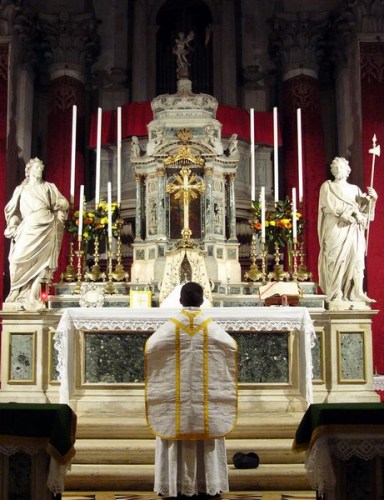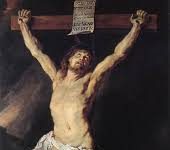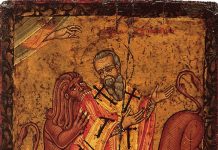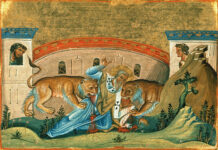
Ignorance – the state of not knowing what you should know – as opposed to nescience, not knowing what you shouldn’t, or needn’t, know.
Monsignor Richard Antall has a recent column on ‘Priestly Ignorance of the New Mass‘, by which he means the Mass promulgated under the authority of Pope Paul VI.
Much could be said of what so many priests do not seem to know – including what many priests do not know of the glories of the ‘old Mass’ – but the Monsignor Antall’s point is that the ‘new Mass’ is not celebrated the way it was, and is, meant to be celebrated. According to the directives of the Second Vatican Council, particularly Sacrosanctum Concilium, the Constitution the Sacred Liturgy, the ‘new Mass’ was never intended to be ‘new’, but simply the ‘old Mass’ with some reforms – a bit more vernacular, more readings from Scripture, more responses from the faithful. A tweak here and there. They never intended for there to be a whole new ‘rite’ or ‘usus’.
The same could be said of the so-called ‘Mass of Pius V’ from the Council of Trent, which was not really the Pope’s Mass – the Pope can’t make a new Mass, which is given to us by Christ, and handed on by Apostolic succession. Rather, the Pope was simply clarifying and reforming what was needed following the Tridentine Council, to correct anything that had gone a bit awry. Saint Pius V’s intention was to maintain Tradition, not abolish it.
So too, the Constitution from the Vatican Council was quite clear that Latin and chant were not only to be maintained, but to be primary in the Mass, with some concession for the vernacular and other sacred music (especially polyphony). Same with the pipe organ, which was to be given ‘pride of place’ before any other instruments, only permitted if they were consistent with ‘sacred use’.
The Council said nothing about abolishing and forbidding Latin and chant, or ripping out high altars and communion rails, facing the people, ignoring the Roman canon, writing new Eucharistic prayers, receiving the Eucharist in the hand, Eucharistic ministers and lay lectors, in lay clothes, queuing up, altar girls, tawdry chasubles, banal hymns…And this only lists what is now sort-of-in-a way permitted, at least by concession and indult.
Most of the Fathers at the Council – most, but perhaps not all – would have been aghast at what has transpired in the intervening decades. As we’ve written before, it is difficult to argue that the new Mass, at least as we normally see it celebrated, is a fruit of Vatican II.
Ecclesia semper reformanda – The Church is always in need of reform, as is the Liturgy, but with, as Cardinal Ratzinger alluded, with a light and reverential touch, more like a gardener tending a garden, than a wrecker tearing down, and building a whole new Bauhaus structure.
It’s past time to return to the fruitful garden of Tradition, and what we had, and have, been given, from Christ, the Apostles, Irenaeus and onwards.










